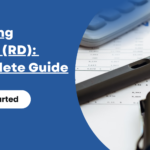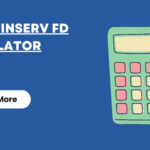A Tax-Saving Fixed Deposit (FD) is a special type of Fixed Deposit that allows you to save taxes under Section 80C of the Income Tax Act, 1961. By investing in a tax-saving FD, you can claim a deduction of up to ₹1.5 lakh from your taxable income in a financial year, which makes it a popular choice for risk-averse investors looking for tax-efficient investment options.
Key Features of Tax-Saving Fixed Deposits:
- Tax Benefits Under Section 80C:
You can claim a tax deduction of up to ₹1.5 lakh in a financial year. This helps reduce your taxable income and, in turn, lowers your tax liability. - Lock-in Period:
Tax-saving FDs have a mandatory lock-in period of 5 years, meaning you cannot withdraw or liquidate the deposit before the maturity period ends. Premature withdrawals are not allowed under any circumstances. - Interest Rates:
The interest rates on tax-saving FDs are similar to regular Fixed Deposits. The rates may vary slightly from one bank to another and are typically higher for senior citizens. - Interest is Taxable:
While the principal amount invested is eligible for tax deduction, the interest earned on a tax-saving FD is fully taxable. It is added to your total income and taxed according to your applicable income tax slab. - Single and Joint Holding:
Tax-saving FDs can be held in both single and joint accounts. However, in the case of joint accounts, only the first account holder is eligible for the tax benefits under Section 80C. - No Loan Against FD:
Unlike regular FDs, you cannot take a loan or overdraft facility against a tax-saving FD during the lock-in period.
Advantages of Tax-Saving Fixed Deposits:
- Guaranteed Returns:
Tax-saving FDs offer fixed interest rates, making them a safe investment option compared to market-linked investments such as mutual funds or stocks. - Tax Deduction:
By investing in a tax-saving FD, you can reduce your taxable income by up to ₹1.5 lakh in a financial year. - Low Risk:
As an FD, this investment offers security of capital, as it is not subject to market volatility. - Convenient to Open:
Most banks and NBFCs offer tax-saving FDs, and they can be easily opened either online or at a branch.
Disadvantages of Tax-Saving Fixed Deposits:
- Lock-in Period:
The 5-year lock-in period limits liquidity. If you need funds before maturity, tax-saving FDs are not the best option. - Tax on Interest Earned:
Though you get tax benefits on the principal investment, the interest earned on tax-saving FDs is fully taxable, which can reduce the effective returns. - Fixed Returns:
Unlike mutual funds or equity-linked savings schemes (ELSS), which can offer higher returns, tax-saving FDs provide fixed and relatively lower returns.
How to Invest in a Tax-Saving FD:
- Visit Your Bank:
You can either visit a branch of your bank or use online banking to open a tax-saving FD. - Minimum Deposit:
The minimum deposit amount for a tax-saving FD varies by bank but is generally around ₹1,000 to ₹10,000. - Select the Tenure:
Tax-saving FDs have a fixed tenure of 5 years, so you won’t be able to customize the duration. - Choose Interest Payout Option:
You can choose between cumulative (interest paid at maturity) and non-cumulative (interest paid monthly, quarterly, or annually) options.
Conclusion:
A Tax-Saving Fixed Deposit is an excellent choice for conservative investors looking to save taxes while earning steady returns. Although it has a lock-in period of 5 years and the interest earned is taxable, the capital protection and guaranteed returns make it a reliable option for those who want to diversify their tax-saving portfolio without exposing themselves to market risks.










